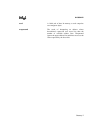
Glossary-3
GLOSSARY
deassert The term deassert refers to the act of making a signal
inactive (disabled). The polarity (high/low) is defined
by the signal name. Active-low signals are designated
by a pound symbol (#) suffix; active-high signals have
no suffix. To deassert RD# is to drive it high; to
deassert ALE is to drive it low.
doping The process of introducing a periodic table Group III
or Group V element into a Group IV element (e.g.,
silicon). A Group III impurity (e.g., indium or
gallium) results in a p-type material. A Group V
impurity (e.g., arsenic or antimony) results in an n-
type material.
double word A 32-bit unit of data. In memory, a double word
comprises four contiguous bytes.
dword See double word.
edge-triggered The mode in which a device or component recognizes
a falling edge (high-to-low transition), a rising edge
(low-to-high transition), or a rising or falling edge of
an input signal as the assertion of that signal. See also
level-triggered.
encryption array An array of key bytes used to encrypt user code in the
on-chip code memory as that code is read; protects
against unauthorized access to user’s code.
EPROM Erasable, programmable read-only memory
external address A 16-bit or 17-bit address presented on the device
pins. The address decoded by an external device
depends on how many of these address bits the
external system uses. See also internal address.
FET Field-effect transistor.
idle mode The power conservation mode that freezes the core
clocks but leaves the peripheral clocks running.
input leakage Current leakage from an input pin to power or ground.
integer Any member of the set consisting of the positive and
negative whole numbers and zero.
internal address The 24-bit address that the device generates. See also
external address.


















